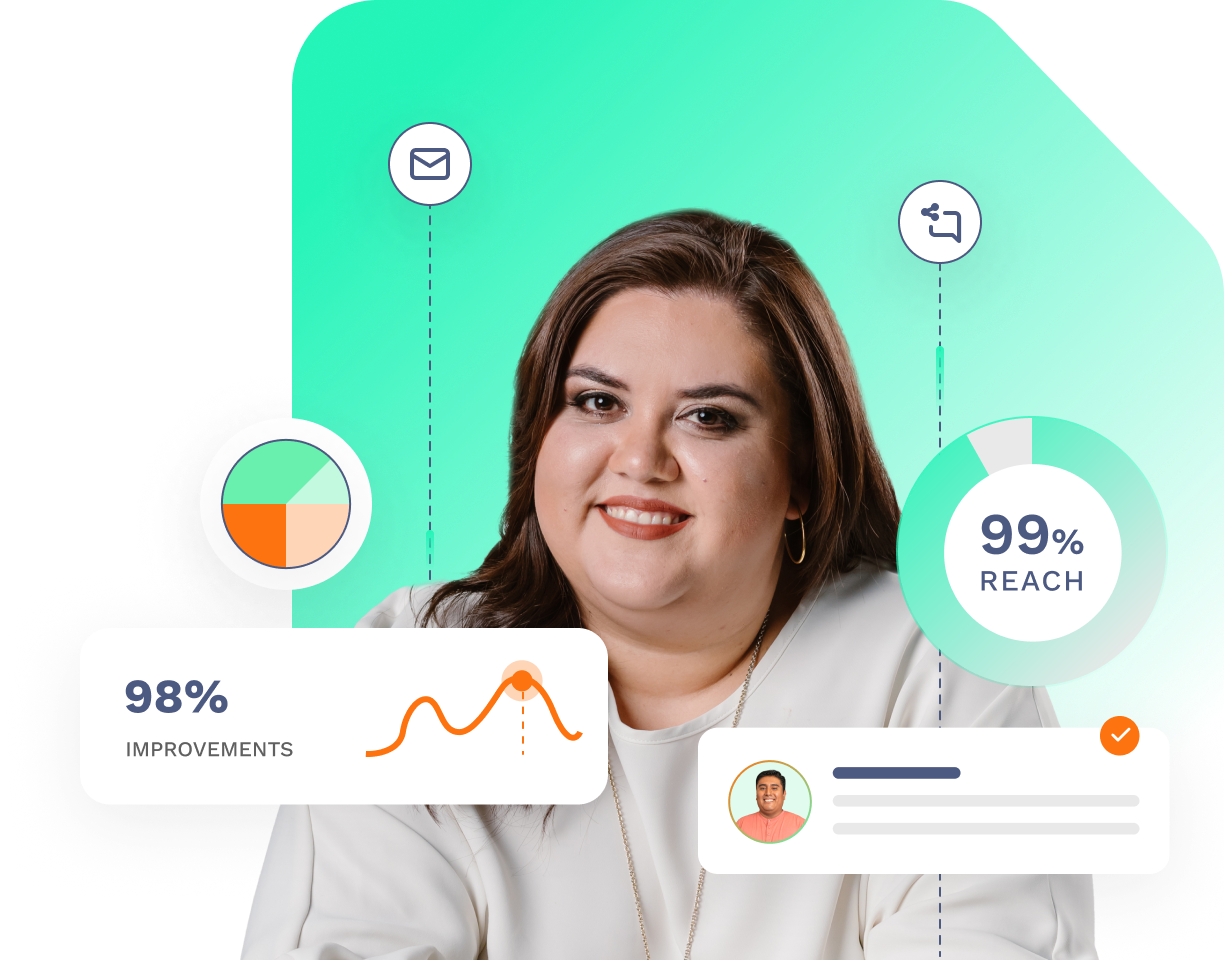Inbound Marketing
Educational digital marketing: The boost your institution needs

Lourdes Calderón
Lourdes Calderón | Oct 23, 2025 | 7 MIN READ
Oct 23, 2025 7 MIN READ

In a world where students research, compare and decide online before taking the next step in their education, having an effective digital marketing strategy is no longer an option: it's a necessity. Educational institutions that understand this shift are leading the way in student recruitment and strengthening their institutional brand, while those that still rely solely on traditional methods risk falling behind.
In this article, we'll explore why digital marketing is critical to educational success, how it's transforming student recruitment, and what steps your institution should take to build a truly effective strategy.
The shift in student behavior: from the classroom to the digital environment.
A decade ago, admissions processes relied on in-person fairs, printed brochures and personal references. Today, more than 80% of students start their search for academic programs online. From the first Google search to comparing curricula on social networks or filling out a form on a website, the prospective student's journey unfolds digitally.
Current - and even more so future - generations expect institutions to:
-
Have a consistent and engaging digital presence.
-
Respond quickly to their queries.
-
Provide clear, personalized information.
This means that the digital experience you provide (your website, social media, campaigns and emails) directly influences the perception of your institution and its ability to convert prospects into enrollees.
According to HubSpot research, 63% of students admit that their first impression of an institution depends on the digital experience it offers.
Competition in education has never been stronger
The growth of online education, newhybrid models and the internationalization of educational offerings have multiplied the options available. This means that your institution is no longer competing only with those in the local environment, but with universities and educational centers around the world.
In this context, an effective digital marketing strategy allows you to highlight your value proposition, reach specific audiences and position yourself in the channels where your future students spend the most time.
Some key benefits:
-
Visibility: a digital strategy allows you to appear in the top search results, on social networks or in segmented campaigns.
-
Segmentation: you can target your messages to specific profiles (age, interests, location, educational level).
-
Measurement: every action is measurable, allowing you to adjust your strategy in real time.
Without a solid digital approach, an institution runs the risk of being invisible to an increasingly connected public.
What does it mean to have an "effective" digital marketing strategy?
Having active social networks or investing in ads is not enough. An effective digital strategy involves a comprehensive and coherent plan that aligns institutional goals with the right tools, channels and messaging.
An effective strategy includes:
-
A website optimized to capture leads (clear forms, chatbots, downloadable resources).
-
Valuable content, such as blogs, videos, guides or student testimonials.
-
Marketing automation to nurture prospects and walk them through the decision process.
-
Strong social media presence focused on building community and credibility.
-
Constant data analysis toimprove campaigns and optimize budgets.
In short,educational digital marketing is not only about attracting traffic, but also about converting interest into action: inquiries, applications and enrollments.
Top education marketing challenges (and how to overcome them)
Many institutions face common obstacles when trying to digitize their strategy. Here are some of the most common ones and how to deal with them:
a) Lack of knowledge of the target audience.
Without a clear definition of the "ideal student", campaigns lose effectiveness.
Solution: create buyer personas based on real data - type of program, motivations, socioeconomic level, location, interests - to personalize messages.
b) Lack of technological integration
Many institutions have scattered databases or disconnected administrative systems.
Solution: integratean educational CRM such as HubSpot that centralizes all information and automates follow-up and admission processes.
c) Lack of relevant content
Students are looking for useful information, not just institutional advertising.
Solution: develop an educational content strategy that addresses frequent doubts, shows real experiences and transmits trust.
d) Poor measurement of results
Without clear metrics, it is impossible to know what works.
Solution: define KPIs (clicks, conversions, qualified leads, enrollments) and use analytics dashboards to optimize in real time.
The role of the website: the heart of educational marketing
Your website is much more than an institutional showcase; it is the center of all your digital actions. It's where your network campaigns, your ads, your emails and your content go.
An optimized educational website should:
-
Clearly communicate the academic programs and their value proposition.
-
Have simple and attractive forms that encourage action.
-
Integrate with your CRM to automatically register each contact.
-
Be fast, accessible and adaptable to mobile devices.
-
Include persuasive content, such as success stories or virtual campus tours .
Tip: By connecting your site with a CRM like HubSpot, you can track the entire student journey: from first visit to final enrollment.
How a digital marketing strategy drives admissions.
Digital marketing not only generates visibility: it also improves the efficiency of the admissions process.
a) Automating tracking
Thanks to tools like HubSpot, you can set up automatic flows of emails or notifications based on user behavior. For example:
-
If someone downloads a brochure, they receive a follow-up email with admission dates.
-
If someone visits a program page several times, an advisor can contact them directly.
b) Lead qualification
CRMs allow you to identify which prospects are ready to be contacted and which ones need more information. This saves time and improves the conversion rate.
c) Personalized communication
Segmentation allows you to send relevant messages for each profile: parents, international students, graduate students, etc.
The result: more admissions, less manual efforts and a smoother student experience.
Content marketing: educate before you enroll
In the education sector, selling directly is not as effective as educating and inspiring. Prospective students are looking for confidence and guidance, not just commercial information.
A well-designed content strategy can include:
-
Informative blogs about programs and careers.
-
Student or alumni video testimonials.
-
Downloadable guides on career counseling or financing.
-
Webinars and virtual workshops to solve doubts.
The objective is to accompany students in their decision process and demonstrate that your institution understands their needs.
The importance of analytics and continuous optimization
An effective strategy does not end when the campaign is launched. The true value of digital marketing lies in the ability to measure, analyze and continuously improve.
Analytics tools allow you to answer key questions:
-
Which channel brings in the most potential students?
-
What type of content generates more conversions?
-
How much does it cost to acquire a new student?
By having this data, your institution can invest smarter and demonstrate the real return on its strategy.
🎯 HubSpot offers customizable dashboards that allow you to visualize the entire student journey, from first click to enrollment.
Getting started: steps to implement an effective strategy
If your institution hasn't yet made the digital leap, here's a starter plan:
-
Assess your current situation.
-
Does your website generate leads?
-
Do you have centralized data on your contacts?
-
Do your campaigns have measurable objectives?
-
-
Define your goals.
-
Increase inquiries, reduce intake times, improve online reputation.
-
-
Create your buyer personas.
-
Identify who your ideal students are and what they are looking for.
-
-
Develop relevant content.
-
Blogs, guides, webinars, testimonials.
-
-
Implement an educational CRM.
-
HubSpot, for example, allows you to centralize contacts, automate campaigns and measure results easily.
-
-
Monitor and optimize.
-
Use real data to adjust strategies month by month.
-
Conclusion: the future of admissions is digital
Digital marketing transforms not only how institutions communicate, but also how students experience the educational process from the first click.
An effective strategy combines technology, personalization and valuable content to build lasting relationships. In such a competitive environment, institutions that embrace this vision will be better equipped to attract, inspire and retain the students of the future.
TABLE OF CONTENTS
Stay Updated with Our
Latest Posts
Subscribe now to receive the freshest content, insights, and updates directly in your inbox.

Recent Articles


2024 © The Orange Box Agency – All rights reserved



.png?width=90&height=90&name=facebook%20(1).png)
.png?width=94&height=96&name=Vector%20(1).png)